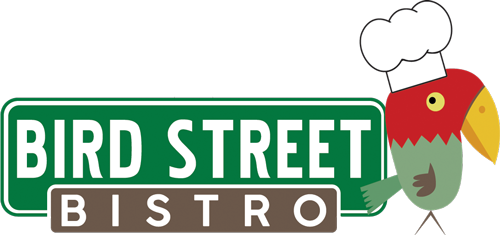How Loneliness Ages Your Parrot
Ever feel like your friends keep you young? According to scientists from the University of Veterinary Medicine Vienna, parrots might feel the same way!
Why Do Parrots Love to Socialize?
It goes without saying: parrots are extremely intelligent, sociable animals. Whether they’re trying to join human conversations or chattering with flockmates, our parrots’ eagerness to engage and interact is a huge part of what makes them such endearing companions.

These traits aren’t unique to the birds in our homes. In fact, our pets can trace their affinity for socialization back to their wild relatives. Nearly all wild parrots live in groups, ranging from pairs to enormous flocks composed of thousands of individuals. In Argentina, scientists have recorded colonies of burrowing parrots containing over 30,000 individual nests!
In short, socialization is an extremely important part of our parrots’ lives. Lonely parrots can exhibit highly visible signs of distress, like feather plucking and other destructive behavior. But it seems that loneliness can have a deeper impact—one that’s invisible to even the most watchful owners.
The Cells of Lonely Parrots Hide a Surprising Truth
Researchers from the University of Veterinary Medicine Vienna took a novel approach to examining the effect of loneliness on parrots’ health. Using blood samples from 45 African grey parrots, they determined the relative lengths of telomeres in the birds’ cells.

Telomeres are segments of DNA found in all animal cells, including our own. These segments work a bit like “caps” on the ends of our genetic material. Generally, telomeres start off long when an animal is born but shorten as the animal ages. You might think of telomeres like erasers on pencils: end caps that get worn down over time.
When the researchers looked at differences in relative telomere lengths between single-housed and pair-housed parrots, they discovered something startling. 9-year-old single-housed birds had telomere lengths comparable to 32-year-old pair-housed birds! To put it another way, parrots that experienced chronic social isolation looked older on a cellular level than parrots that consistently had opportunities to socialize.
Why Is Telomere Shortening in Lonely Parrots So Important?
These findings suggest that chronic loneliness isn’t just a surface-level inconvenience for our parrots. In fact, it can cause damage right down to the cellular level.

There’s a lot scientists still don’t understand about telomeres and their role in animal cells. However, recent research has established that telomeres tend to shorten more rapidly when cells are exposed to higher levels of stress. In humans, there may be links between telomere length, lifespan, and susceptibility to certain diseases.
While we can’t be certain whether the same links exist in parrots, research continues to underscore the importance of proper socialization for our feathered friends.
Of course, keeping these uniquely intelligent animals entertained requires both knowledge and creativity on our end. Check out our article on interacting with your parrot for pointers on keeping playtime fun and fulfilling. We cover everything from birdie basketball to using nutritious, delicious treats to shake things up. As the science shows, being a good flockmate to your parrot can have a further reaching impact than many would expect.
Works Referenced
- Aydinonat, D., Penn, D. J., Smith, S., Moodley, Y., Hoelzl, F., Knauer, F., & Schwarzenberger, F. (2014). Social isolation shortens telomeres in African Grey parrots (Psittacus erithacus erithacus). PLoS One, 9(4), e93839. https://doi.org/10.1371/journal.pone.0093839
- Baukhagen, H., & Engell, M. (2022). Avian cognition and the implications for captive parrot welfare. Animal Welfare, 31(2), 257-267. https://doi.org/10.7120/09627286.31.2.009
- Domínguez-de-Barros, A., Sifaoui, I., Borecka, Z., Dorta-Guerra, R., Lorenzo-Morales, J., Castro-Fuentes, R., & Córdoba-Lanús, E. (2023). An approach to the effects of longevity, sexual maturity, and reproduction on telomere length and oxidative stress in different Psittacidae species. Frontiers in Genetics, 14. https://doi.org/10.3389/fgene.2023.1156730
- Epel, E. S., Blackburn, E. H., Lin, J., Dhabhar, F. S., Adler, N. E., Morrow, J. D., & Cawthon, R. M. (2004). Accelerated telomere shortening in response to life stress. Proceedings of the National Academy of Sciences, 101(49), 17312-17315. https://doi.org/10.1073/pnas.0407162101
- Masello, J. F., Pagnossin, M. L., Sommer, C., & Quillfeldt, P. (2006). Population size, provisioning frequency, flock size and foraging range at the largest known colony of Psittaciformes: the Burrowing Parrots of the north-eastern Patagonian coastal cliffs. Emu-Austral Ornithology, 106(1), 69-79. https://doi.org/10.1071/MU04047
- Wanker, R., Bernate, L. C., & Franck, D. (1996). Socialization of spectacled parrotlets Forpus conspicillatus: The role of parents, crèches and sibling groups in nature. Journal für Ornithologie, 137, 447-461. https://doi.org/10.1007/BF01661101
- Choosing a selection results in a full page refresh.
- Press the space key then arrow keys to make a selection.


